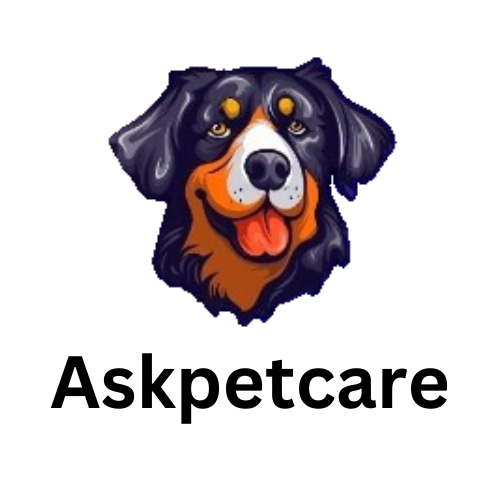Sheprador vs. Purebreds: Comparing Characteristics
Today I will explain in detail about German shepherd lab mix temperament.
A brief overview of German Shepherd Lab mixes (also known as Shepradors): German Shepherd Lab mixes, also called Shepradors, are dogs that come from mixing German Shepherds and Labrador Retrievers. They’re a mix of two popular dog breeds, known for their smartness, loyalty, and friendly nature. Shepherds can have a mix of traits from both parents, making them unique and interesting pets.

Explanation of the popularity of this mixed breed: Lots of people love Shepherds because they combine the best qualities of German Shepherds and Labs. German Shepherds are smart, protective, and good at working tasks. Labs are friendly, playful, and great with families. So, when you mix them, you get a dog that’s both smart and friendly, making them a popular choice for families and individuals who want a great companion.
Purpose of the blog: to provide comprehensive information for current and prospective owners: The blog’s main goal is to give people all the info they need about Shepradors. Whether you already have one or you’re thinking about getting one, this blog will help you understand everything about them. We’ll talk about their traits, how to take care of them, train them, and make sure they’re happy and healthy. It’s like a guidebook for anyone interested in these wonderful dogs.
My related topics:
temperament-of-cane-corso-german-shepherd-mix:
german-shepherd-temperament-stubborn-causes:
Understanding the Parent Breeds • German Shepherd Lab Mix Temperament:

Description of German Shepherds and Labrador Retrievers: German Shepherds are big dogs with strong bodies. They have pointy ears and a long snout. Their fur can be black and tan, or other colors. They’re known for being smart, loyal, and protective. People often see them working as police dogs or helping people with disabilities. Labrador Retrievers, or Labs, are also big dogs with a sturdy build. They have floppy ears and a friendly face. Their fur is usually short and can be yellow, chocolate, or black. Labs are known for being friendly, playful, and good with kids. They’re often used as guide dogs or in search and rescue missions.
Highlighting key traits, such as temperament, size, and coat type: German Shepherds have a serious and protective temperament. They’re big dogs, with males weighing around 65 to 90 pounds and females weighing around 50 to 70 pounds. Their coat is usually medium to long and thick. Labs, on the other hand, have a friendly and outgoing temperament. They’re also big dogs, with males weighing around 65 to 80 pounds and females weighing around 55 to 70 pounds. Their coat is short and water-resistant.
Explanation of how these traits might manifest in a mixed breed: When you mix a German Shepherd and a Labrador Retriever, you get a Sheprador. Since both parent breeds have different traits, the mix can have a combination of these traits. For example, a Sheprador might have the protective instincts of a German Shepherd and the friendliness of a Labrador Retriever. They could also have a medium to large size and a coat that’s somewhere between short and long. It’s like getting the best of both worlds!
Here’s the information presented in a simple table format:
| Breed | Description | Key Traits |
| German Shepherd | – Big dogs with strong bodies- Pointy ears and a long snout- Fur can be black and tan, or other colors- Known for being smart, loyal, and protective | – Serious and protective temperament- Medium to long and thick coat |
| Labrador Retriever | – Big dogs with a sturdy build- Floppy ears and a friendly face- Fur is usually short and can be yellow, chocolate, or black | – Friendly and outgoing temperament- Short and water-resistant coat |
These key traits include temperament, size, and coat type, highlighting the distinct characteristics of German Shepherds and Labrador Retrievers.

Physical Characteristics of German Shepherd Lab Mixes
Overview of common physical traits found in Shepradors: Shepradors, or German Shepherd Lab mixes, can look different depending on which traits they inherit from their parents. But generally, they’re big dogs with strong bodies. They usually have a sturdy build and a straight back, like German Shepherds. Their ears can be pointy or floppy, and their face might have a friendly expression. Shepradors often have a mix of traits from both parent breeds, making each dog unique.
Discussion of coat colors and patterns: Shepradors come in various coat colors and patterns. Their fur can be black, tan, brown, or even a mix of these colors. Some Shepradors might have a solid color coat, while others could have patterns like brindle or sable. The texture of their coat can vary too, ranging from short and smooth to medium-length and dense. Each Sheprador’s coat is unique, just like their personality.
Average size and weight range: Shepherds are typically large dogs, similar to both German Shepherds and Labrador Retrievers. On average, male Shepradors weigh between 65 to 90 pounds (29 to 41 kilograms), while females weigh between 50 to 70 pounds (23 to 32 kilograms). They usually stand around 22 to 26 inches (56 to 66 centimeters) tall at the shoulder. However, the exact size and weight can vary depending on factors like genetics and diet.
In summary, Shepradors have a mix of physical traits from German Shepherds and Labrador Retrievers, making them big, sturdy dogs with a variety of coat colors and patterns. They’re unique in their appearance and can vary in size and weight, but they’re generally loyal and friendly companions.
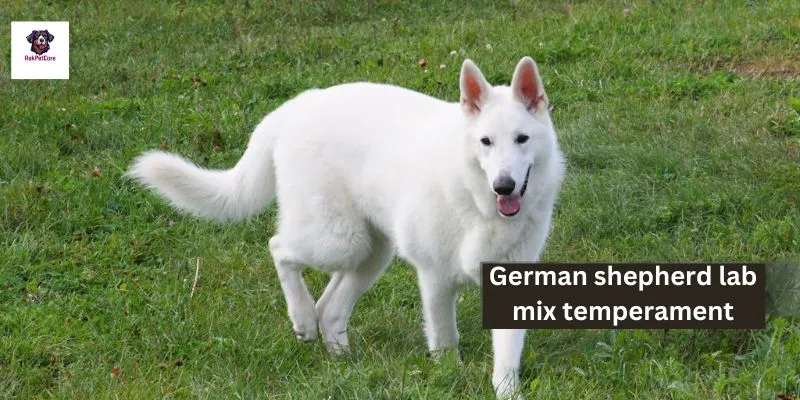
Now I explain Personality and Temperament :
Examination of the typical temperament of German Shepherd Lab mixes: German Shepherd Lab mixes, also known as Shepradors, often have a friendly and loyal temperament. They’re usually smart dogs that like being around people and other animals. Shepradors can be protective of their families, which means they might bark at strangers or act cautious around new things. But overall, they’re known for being good-natured and loving companions.
Discussion of intelligence, loyalty, and energy levels: Shepradors are smart dogs! They’re quick learners and enjoy having tasks to do. Because they’re a mix of two intelligent breeds, German Shepherds and Labrador Retrievers, Shepradors often excel in activities like obedience training, agility, and even working tasks. They’re also very loyal to their families and enjoy spending time with them. When it comes to energy levels, Shepradors are usually pretty active dogs. They like going for walks, playing fetch, and exploring the outdoors.
Insights into potential behavioral traits inherited from both parent breeds: German Shepherds and Labs have different but complementary behavioral traits, and Shepradors can inherit a mix of these traits. For example, from German Shepherds, Shepradors might get traits like being protective, alert, and eager to work. From Labs, they might inherit friendliness, playfulness, and a love for water. This combination of traits makes Shepradors versatile and adaptable to various lifestyles and environments.
Overall, Shepradors are friendly, intelligent, and loyal dogs with a good balance of energy. They can be protective of their families and excel in activities that stimulate their minds and bodies. Whether as a family pet, a working companion, or a loyal friend, Shepradors bring joy and companionship to their owners’ lives.
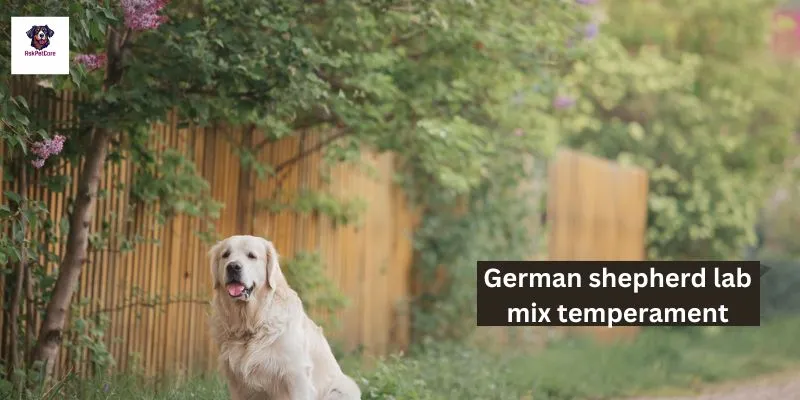
Now I explain Care and Maintenance :
Grooming requirements: Shepradors have coats that vary in length and texture, so their grooming needs can differ. Generally, they benefit from regular brushing to remove loose fur and prevent matting, especially if they have longer coats. Bathing should be done as needed, such as when they get dirty or start to smell. It’s essential to use dog-friendly shampoo and rinse them thoroughly. Additionally, regular nail trimming, ear cleaning, and dental care are essential parts of their grooming routine to keep them healthy and comfortable.
Exercise needs and recommendations: Shepradors are active dogs that need plenty of exercise to stay physically and mentally stimulated. Daily walks, playtime in the yard, or engaging in activities like fetch or agility can help burn off their energy. Interactive toys, puzzle feeders, and training sessions are also great ways to challenge their minds and prevent boredom. Aim for at least 30 to 60 minutes of moderate to vigorous exercise each day, but adjust based on your dog’s age, health, and energy levels.
Dietary considerations: Providing a balanced diet is crucial for keeping Shepradors healthy and maintaining an ideal weight. Choose high-quality dog food formulated for their size, age, and activity level. Feeding schedules can vary, but most adult Shepradors do well with two meals a day. Portion sizes should be based on their weight, age, and energy expenditure. Avoid overfeeding or feeding table scraps, as this can lead to obesity and other health issues. Always provide fresh water and monitor their eating habits to ensure they’re getting the right amount of food.
By attending to their grooming needs, providing regular exercise, and offering a balanced diet, you can help keep your Sheprador healthy, happy, and thriving. Remember to tailor their care routine to their individual needs and consult with a veterinarian if you have any concerns about their health or well-being.

Now I explain Health Concerns and Considerations •
The health concerns and considerations for Shepradors:
Overview of common health issues seen in German Shepherds and Labrador Retrievers: German Shepherds and Labrador Retrievers are both prone to certain health problems. German Shepherds may have issues like hip dysplasia, where the hip joints don’t fit properly, causing pain and mobility problems. They can also develop digestive issues, skin problems, or certain genetic conditions. Labs, on the other hand, maybe at risk for obesity, joint problems, and certain eye conditions like cataracts. Knowing about these potential health issues can help owners be proactive in their care.
Discussion of potential genetic predispositions in mixed-breed dogs: Mixed-breed dogs like Shepradors can inherit health issues from both parent breeds. While mixing breeds can sometimes reduce the risk of certain genetic conditions through what’s called hybrid vigor, it’s still important to be aware of potential health concerns. This means shepherds may still be at risk for health problems like hip dysplasia, joint issues, or genetic conditions that affect both German Shepherds and Labrador Retrievers.
Advice on preventive care and regular veterinary check-ups: Preventive care is essential for keeping Shepradors healthy. This includes regular veterinary check-ups, where the vet can monitor their health and catch any potential issues early. Vaccinations, parasite prevention, and dental care are also crucial parts of preventive care. Additionally, maintaining a healthy weight through proper diet and regular exercise can help prevent obesity and related health problems. By staying proactive and attentive to their health needs, owners can help ensure their Shepradors live long, happy lives.
By understanding the common health issues, being proactive with preventive care, and staying vigilant with regular veterinary check-ups, owners can help keep their shepherds healthy and thriving for years to come.
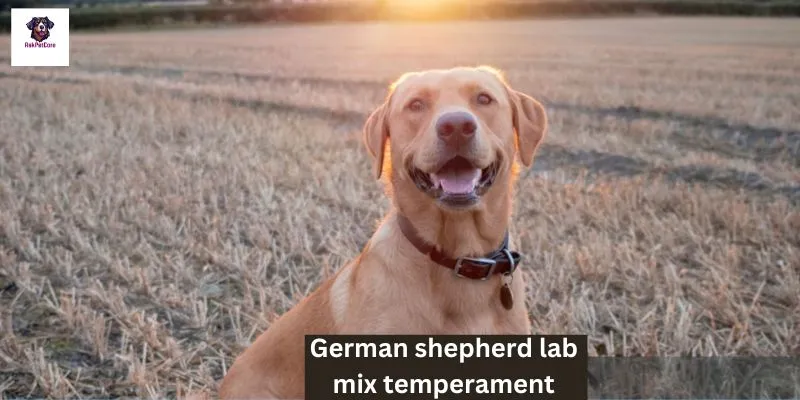
Now I explain Training Tips and Techniques :
let’s simplify training tips and techniques for Shepradors:
Importance of early socialization and obedience training: Early socialization and obedience training are super important for Shepradors. Socialization means exposing them to different people, animals, and environments when they’re young so they learn to be friendly and confident. Obedience training teaches them basic commands like sit, stay, and come, which helps keep them safe and well-behaved. Starting training early sets a good foundation for their behavior as they grow up.
Positive reinforcement methods for teaching commands and addressing behavioral issues: Positive reinforcement means rewarding good behavior with treats, praise, or toys. It’s a gentle and effective way to train Shepradors. When they do something you like, like sitting when you ask, give them a treat and praise. If they do something you don’t like, like jumping up, ignore the behavior and redirect them to something positive. Using positive reinforcement builds trust and strengthens your bond with your dog.
Suggestions for managing energy levels and preventing boredom: Shepradors are energetic dogs that need lots of exercise and mental stimulation. To manage their energy levels and prevent boredom, give them plenty of opportunities to play, run, and explore. Take them for daily walks, play fetch or tug-of-war in the yard, or try activities like agility or obedience training. Puzzle toys, stuffed Kongs, and interactive games can also keep their minds busy and prevent them from getting bored.
Training Shepradors can be fun and rewarding when you use positive reinforcement techniques and provide plenty of opportunities for exercise and mental stimulation. With patience, consistency, and lots of love, you can help your Sheprador become a well-behaved and happy companion.
Now I explain Living with a German Shepherd Lab Mix •
Let’s simplify living with a German Shepherd Lab mix:
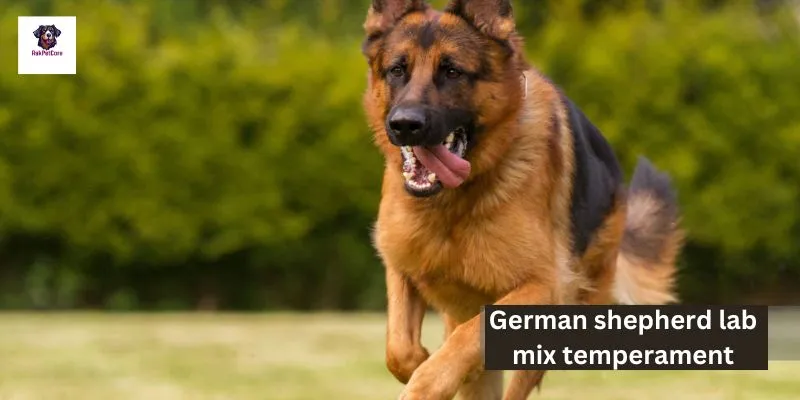
Considerations for families, singles, and apartment dwellers:
-
- Families: Shepherds can make great family pets because they’re loyal and friendly. They enjoy being part of the family and can be good with kids if socialized early. Families should make sure they have enough space and time to dedicate to their Sheprador’s exercise and training needs.
- Singles: Shepradors can be excellent companions for singles too! They’re loyal and love spending time with their owners. Singles should be prepared to give their Sheprador plenty of attention and exercise to keep them happy and healthy.
- Apartment dwellers: While Shepherds are big dogs, they can do well in apartments if they get enough exercise and mental stimulation. Apartment dwellers should make sure they have access to outdoor space for walks and playtime. They should also be mindful of their Sheprador’s barking, especially if they’re protective of their home.
Tips for integrating a Sheprador into a multi-pet household:
-
- Slow introductions: When introducing a Sheprador to other pets, take it slow and supervise their interactions. Allow them to get used to each other’s scents before meeting face-to-face.
- Positive reinforcement: Reward good behavior and interactions between pets with treats and praise. This helps them associate positive experiences with each other.
- Respect boundaries: Give each pet their own space and belongings, like separate beds and feeding areas. This helps prevent conflicts over resources.
Insight into the commitment required to provide a loving and fulfilling home for this mixed breed:
-
- Shepradors require a significant commitment from their owners. They need daily exercise, mental stimulation, and companionship to thrive.
- Owners should be prepared to invest time and effort into training and socializing their Sheprador to ensure they’re well-behaved and well-adjusted.
- Providing a loving and fulfilling home for a Sheprador means being patient, consistent, and understanding of their needs. It also means being prepared for a long-term commitment to their health and well-being.
Living with a Sheprador can be rewarding and fulfilling for families, singles, and apartment dwellers alike. With the right care, training, and commitment, Shepradors can make loyal and loving companions for many years to come.

Frequently Asked Questions •
- Are German Shepherd Lab mixes good family pets?
- Yes, German Shepherd Lab mixes, or Shepradors can be excellent family pets! They’re known for their loyalty, intelligence, and friendly nature, making them great companions for families of all sizes.
- Do Shepradors require a lot of exercise?
- Yes, Shepradors are active dogs that need regular exercise to stay healthy and happy. Daily walks, playtime, and mental stimulation activities are essential to keep them physically and mentally stimulated.
- Are German Shepherd Lab mixes easy to train?
- Yes, Shepradors are generally intelligent and eager to please, making them trainable dogs. Positive reinforcement methods, like using treats and praise, work well for teaching them commands and addressing behavioral issues.
- Do Shepradors shed a lot?
- Shepradors can shed moderately to heavily, depending on the individual dog and their coat type. Regular grooming, such as brushing and bathing, can help manage shedding and keep their coat healthy.
- Are German Shepherd Lab mixes good with children?
- Yes, Shepradors are usually good with children when properly socialized and trained. They’re known for their gentle and friendly nature, making them suitable companions for families with kids.
- Do Shepradors make good guard dogs?
- Yes, Shepradors can make good guard dogs because they’re naturally protective of their families. However, proper training and socialization are essential to ensure they distinguish between friends and potential threats.
- How big do German Shepherd Lab mixes get?
- Shepradors are typically large dogs, similar in size to their parent breeds. Males can weigh between 65 to 90 pounds, while females can weigh between 50 to 70 pounds, on average.
- Are German Shepherd Lab mixes good with other pets?
- With proper socialization and introductions, Shepradors can get along well with other pets in the household. Supervision and positive reinforcement can help promote harmonious relationships between Shepradors and other animals.
These are just a few common questions about German Shepherd Lab mixes. Providing practical advice and solutions based on breed-specific knowledge can help current and prospective owners better understand and care for their shepherds.
Now I explain in detail a German Shepherd Labrador mix puppy, also known as a Sheprador.
This mixed breed combines the traits of two popular purebred dogs, the German Shepherd and the Labrador Retriever, resulting in a unique and versatile companion.
- Appearance:
- German Shepherd Lab mix puppies often display a variety of physical characteristics inherited from both parent breeds.
- They may have the body structure and facial features reminiscent of a German Shepherd, including a sturdy build, erect ears, and a straight back.
- Coat colors can vary widely, with possibilities including black, tan, brown, or a combination of these colors. Some Shepradors may inherit the signature black coat of the Labrador Retriever.
- Their coats are typically dense and weather-resistant, with varying lengths depending on the dominant parent breed.
- Temperament:
- Sheprador puppies usually inherit a blend of traits from their German Shepherd and Labrador Retriever parents.
- They are known for their intelligence, loyalty, and friendly demeanor, making them excellent family pets.
- Like both parent breeds, Shepradors are often eager to please, making them relatively easy to train.
- They tend to be affectionate and sociable, enjoying interactions with both humans and other animals.
- Energy Level and Exercise Needs:
- German Shepherd Lab mix puppies are typically high-energy dogs, owing to the energetic nature of both parent breeds.
- They require regular exercise and mental stimulation to stay happy and healthy.
- Daily walks, play sessions, and interactive toys are essential to help them burn off excess energy and prevent boredom.
- Engaging in activities such as hiking, jogging, or agility training can provide them with both physical and mental stimulation.
- Training and Socialization:
- Early socialization and obedience training are crucial for Sheprador puppies to help them develop into well-behaved adult dogs.
- Positive reinforcement methods, such as rewards-based training and praise, work well with this intelligent and eager-to-please breed.
- Consistency, patience, and firm but gentle guidance are key when training a German Shepherd Labrador mix puppy.
- Health Considerations:
- As with all mixed-breed dogs, Shepradors may inherit health issues from their parent breeds.
- Common health concerns to watch for include hip dysplasia, elbow dysplasia, and certain eye conditions.
- Regular veterinary check-ups, a balanced diet, proper exercise, and preventive care can help mitigate potential health issues and ensure a long and healthy life for your Sheprador puppy.
- Family Compatibility:
- German Shepherd Lab mix puppies can make excellent family pets, especially in households with active lifestyles.
- They are typically good with children and other pets when properly socialized from a young age.
- Due to their loyal and protective nature, they can also serve as excellent watchdogs, alerting their owners to any potential threats.
- Conclusion:
- German Shepherd Labrador mix puppies combine the best traits of two beloved breeds, resulting in a versatile and affectionate companion.
- With proper care, training, and socialization, Sheprador puppies can grow into well-rounded adult dogs that bring joy and companionship to their families for years to come.
-
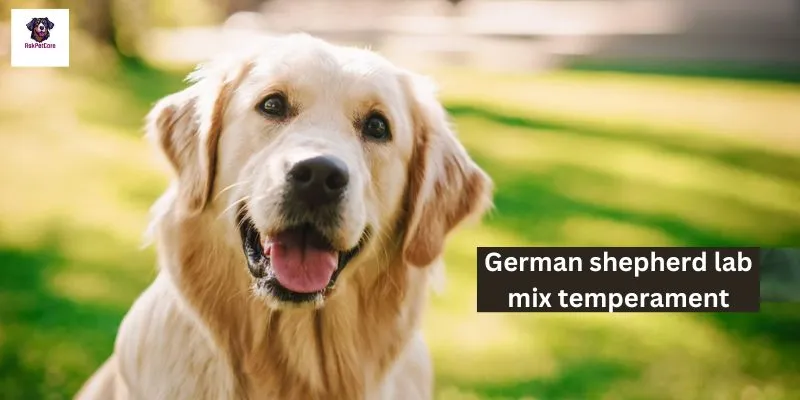
German Shepherd Lab Mix Temperament
Now I explain German shepherd lab mix temperament stubborn.
While German Shepherd Labrador mix (Sheprador) dogs are often known for their intelligence and trainability, like any breed, individual dogs can display a range of temperaments, including stubbornness. Here’s a detailed explanation of why some Shepradors may exhibit stubborn behavior:
- Genetic Factors:
- Both German Shepherds and Labrador Retrievers are known for their intelligence and independence. However, these breeds can also be strong-willed and assertive.
- When a shepherd inherits these traits from both parent breeds, it can result in a dog that has a naturally stubborn disposition.
- Socialization and Training:
- Proper socialization and training from an early age are crucial for any dog, including Shepradors.
- If a Sheprador puppy does not receive adequate training or experiences inconsistent discipline, they may develop stubborn behaviors as they grows older.
- Lack of socialization with other dogs, people, and new environments can also contribute to stubbornness, as the dog may become anxious or fearful in unfamiliar situations.
- Temperament Variations:
- Just like people, dogs have individual personalities and temperaments. Not all Shepradors will be stubborn, but some may exhibit this trait more prominently than others.
- Environmental factors, such as living conditions, daily routines, and interactions with family members, can influence a dog’s behavior and temperament.
- Communication and Understanding:
- Dogs communicate differently from humans, and what may appear as stubbornness could be a lack of understanding or confusion.
- Shepradors, like many intelligent breeds, may challenge commands or exhibit stubborn behavior if they are unsure of what is expected of them or if they perceive the task as uninteresting or unrewarding.
- Positive Reinforcement and Patience:
- Dealing with a stubborn Sheprador requires patience, consistency, and positive reinforcement.
- Using rewards-based training methods, such as treats, praise, and play, can motivate a stubborn dog to follow commands and engage in desired behaviors.
- Harsh punishment or negative reinforcement techniques are generally ineffective and can worsen stubbornness or lead to behavioral issues.
- Professional Guidance:
- In cases where a Sheprador’s stubbornness poses challenges for training or behavior modification, seeking guidance from a professional dog trainer or behaviorist may be beneficial.
- A qualified trainer can assess the dog’s temperament, identify underlying causes of stubborn behavior, and develop a tailored training plan to address specific issues.
- Consistency and Routine:
- Establishing clear rules, routines, and boundaries can help manage a Sheprador’s stubborn tendencies.
- Consistent training sessions, regular exercise, and mental stimulation are essential for keeping the dog mentally and physically engaged, reducing the likelihood of stubborn behavior.
By understanding the potential reasons behind a Sheprador’s stubbornness and implementing appropriate training techniques, owners can effectively address this behavior and foster a positive relationship with their dog.

Now I explain about German shepherd yellow lab mix.
Certainly! A German Shepherd Yellow Lab mix, often referred to as a Sheprador, is a crossbreed between a German Shepherd and a Labrador Retriever. These mixed-breed dogs inherit traits from both parent breeds, resulting in a unique combination of characteristics. Here’s a detailed explanation:
- Physical Appearance:
- German Shepherd Yellow Lab mixes can exhibit a wide range of physical traits inherited from their parents.
- They may have a medium to large-sized body with a sturdy build, similar to both the German Shepherd and the Labrador Retriever.
- Coat colors can vary, but they often have a yellow, tan, or cream-colored coat, sometimes with markings or patterns resembling those of a German Shepherd.
- Their coat may be short to medium in length, dense, and water-resistant, like that of a Labrador Retriever.
- Temperament:
- Shepradors typically inherit a blend of temperamental traits from both parent breeds.
- They are known for their intelligence, loyalty, and friendly disposition, making them excellent family pets.
- German Shepherd Yellow Lab mixes are often affectionate, sociable, and eager to please, enjoying interactions with both humans and other animals.
- They may exhibit traits such as loyalty, protectiveness, and a strong work ethic, similar to both German Shepherds and Labrador Retrievers.
- Energy Level and Exercise Needs:
- Like their parent breeds, Shepradors are typically high-energy dogs that require plenty of exercise and mental stimulation.
- They enjoy activities such as walking, jogging, hiking, and playing fetch, making them well-suited for active families or individuals.
- Regular exercise helps prevent boredom and behavioral issues in Shepradors and contributes to their overall health and well-being.
- Training and Socialization:
- Early socialization and obedience training are essential for Sheprador puppies to develop into well-behaved adult dogs.
- They respond well to positive reinforcement training methods, such as rewards, praise, and consistent commands.
- Training should be consistent, patient, and firm but gentle to help them learn proper behavior and manners.
- Health Considerations:
- Shepradors may inherit health issues from both parent breeds, although mixed-breed dogs often benefit from hybrid vigor.
- Common health concerns to watch for include hip dysplasia, elbow dysplasia, ear infections, and obesity.
- Regular veterinary check-ups, a balanced diet, proper grooming, and preventive care can help maintain the health and well-being of a German Shepherd Yellow Lab mix.
- Family Compatibility:
- German Shepherd Yellow Lab mixes can make excellent family pets, especially in households with children and other pets.
- They are typically good-natured, tolerant, and patient, making them suitable companions for families of all sizes.
- Due to their loyal and protective nature, they can also serve as excellent watchdogs, alerting their owners to any potential threats.
Overall, German Shepherd Yellow Lab mixes are versatile, affectionate, and loyal companions that thrive in loving and active environments. With proper care, training, and socialization, they can make wonderful additions to a variety of households.
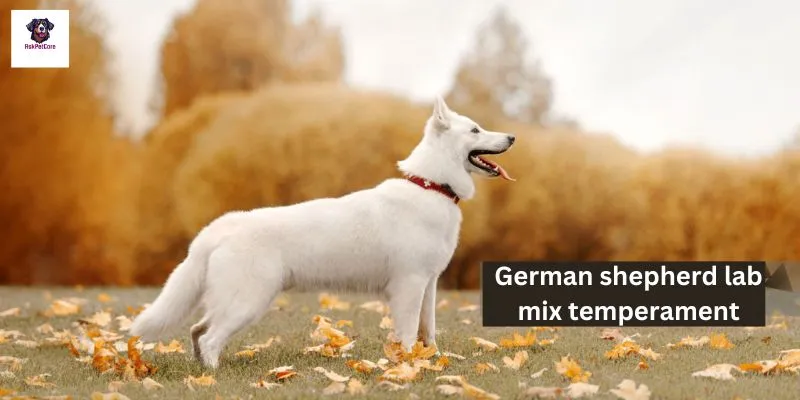
Let’s explore Are German Shepherd lab mix good dogs?
Yes, German Shepherd Lab mixes, also known as Shepradors, can make excellent dogs for the right owners. Here’s a detailed explanation of why they are often considered good dogs:
- Intelligence: Both German Shepherds and Labrador Retrievers are known for their high intelligence. When combined, Shepradors inherit this intelligence, making them quick learners and easily trainable. They thrive on mental stimulation and enjoy engaging in activities that challenge their minds.
- Loyalty: Shepherds are renowned for their loyalty to their owners and families. They form strong bonds with their human companions and are dedicated to protecting and being by their side. This loyalty makes them excellent watchdogs and loyal companions.
- Versatility: With their mix of traits from two versatile breeds, Shepradors are adaptable to various living situations and lifestyles. Whether in a suburban home, a rural farm, or an urban apartment, they can adjust well as long as they receive proper exercise, training, and socialization.
- Friendly Disposition: Labrador Retrievers are famously known for their friendly and outgoing nature, while German Shepherds can be protective yet gentle with their families. Shepherds often inherit the best of both worlds, being sociable, approachable, and friendly with people and other animals.
- Work Ethic: Both German Shepherds and Labrador Retrievers were bred for specific work purposes, such as herding, guarding, retrieving, and assisting humans. Shepradors often inherit a strong work ethic from their parent breeds, making them eager to please and willing to participate in various activities and tasks.
- Physical Abilities: Shepradors typically possess a good balance of athleticism and endurance, making them suitable companions for outdoor activities such as hiking, jogging, and swimming. They enjoy being active and thrive in environments where they can expend their energy.
- Family Compatibility: Shepherds are known for their gentle and tolerant nature, especially with children. They often make excellent family pets, forming strong bonds with children and enjoying playtime with them. Their protective instincts also make them watchful over their family members.
- Health and Longevity: While no dog breed is entirely free from health issues, Shepradors may benefit from hybrid vigor, a phenomenon where mixed-breed dogs are often healthier than their purebred counterparts due to genetic diversity. With proper care, nutrition, and regular veterinary check-ups, Shepradors can enjoy long and healthy lives.
In conclusion, German Shepherd Lab mixes can be wonderful dogs for individuals and families seeking a loyal, intelligent, versatile, and affectionate companion. However, it’s essential to remember that each dog is unique, and factors such as training, socialization, and environment play significant roles in shaping their behavior and temperament. Potential owners should research the breed thoroughly, consider their lifestyle and preferences, and ensure they can provide the necessary care and attention before bringing a Sheprador into their home.
Let’s explore how much should a German Shepherd lab mix eat.
Determining how much a German Shepherd Lab mix should eat depends on various factors, including age, weight, activity level, metabolism, and overall health. Here’s a detailed explanation to help you understand how to determine the appropriate amount of food for your dog:
- Consultation with a Veterinarian: Before establishing a feeding regimen for your German Shepherd Lab mix, it’s essential to consult with a veterinarian. A vet can assess your dog’s specific dietary needs based on factors such as age, weight, body condition, activity level, and any underlying health concerns.
- Consider the Dog’s Age: Puppies, adult dogs, and seniors have different nutritional requirements. Puppies require more calories and nutrients to support their growth and development, while senior dogs may have lower energy needs and require a diet tailored to their aging bodies.
- Read the Feeding Guidelines: Most commercial dog food brands provide feeding guidelines on their packaging. These guidelines typically recommend a daily feeding amount based on the dog’s weight. However, these recommendations are general guidelines and may need to be adjusted based on your individual dog’s needs.
- Calculate Caloric Needs: The caloric requirements of a German Shepherd Lab mix depend on factors such as size, age, and activity level. Generally, a moderately active adult dog of this mix may require between 1,200 to 1,800 calories per day. However, this can vary significantly, so it’s essential to monitor your dog’s weight and adjust their food intake accordingly.
- Monitor Body Condition: It’s crucial to monitor your dog’s body condition regularly to ensure they are neither underweight nor overweight. You should be able to feel your dog’s ribs without pressing too hard, and they should have a visible waist when viewed from above. If your dog is underweight or overweight, adjust their food intake accordingly under the guidance of your veterinarian.
- Divide Meals Appropriately: Depending on your schedule and your dog’s preferences, you may choose to feed your German Shepherd Lab mix once or twice a day. Dividing the daily food allowance into multiple meals can help prevent overeating, reduce the risk of bloat, and maintain stable energy levels throughout the day.
- Choose High-Quality Food: Selecting a high-quality dog food that meets your German Shepherd Lab mix’s nutritional needs is essential. Look for a balanced diet that contains high-quality protein sources, essential vitamins and minerals, and minimal fillers or artificial additives.
- Avoid Overfeeding and Table Scraps: Overfeeding can lead to weight gain and associated health problems, such as obesity. Avoid giving your dog excessive treats or table scraps, as these can contribute to an unbalanced diet and excess calorie intake.
- Hydration: Always ensure that your German Shepherd Lab mix has access to fresh, clean water at all times. Proper hydration is essential for overall health and helps regulate body temperature, aid digestion, and support organ function.
By carefully considering these factors and working with your veterinarian to establish an appropriate feeding plan, you can ensure that your German Shepherd Lab mix receives the nutrition they need to thrive and maintain optimal health throughout its life.
Below is a table outlining the estimated daily food requirements for a German Shepherd Lab mix based on weight and caloric needs:
| Weight (lbs) | Weight (kg) | Estimated Daily Caloric Requirement (kcal) | Estimated Daily Food Requirement (grams)* |
| 10 | 4.5 | 450 – 675 | 150 – 225 |
| 20 | 9 | 900 – 1,350 | 300 – 450 |
| 30 | 13.5 | 1,350 – 2,025 | 450 – 675 |
| 40 | 18 | 1,800 – 2,700 | 600 – 900 |
| 50 | 22.5 | 2,250 – 3,375 | 750 – 1,125 |
| 60 | 27 | 2,700 – 4,050 | 900 – 1,350 |
| 70 | 31.5 | 3,150 – 4,725 | 1,050 – 1,575 |
| 80 | 36 | 3,600 – 5,400 | 1,200 – 1,800 |
| 90 | 40.5 | 4,050 – 6,075 | 1,350 – 2,025 |
Note: The estimated daily food requirement in grams is calculated based on the assumption that each gram of dog food provides approximately 3.0 to 3.5 kilocalories (kcal). This calculation may vary depending on the specific brand and formula of dog food used.
It’s essential to monitor your dog’s body condition and adjust their food intake accordingly. If your German Shepherd Lab mix is gaining or losing weight unintentionally, consult with your veterinarian to determine the appropriate course of action and adjust their feeding plan as needed.
Here are some reference books that are considered authoritative on the topic of dog care, including nail care:
- “The Complete Dog Owner’s Manual” by Dr. Bruce Fogle
- “The Ultimate Guide to Dog Care: Everything You Need to Know to Keep Your Dog Happy and Healthy” by Amy Marder and Andrew Luescher
- “The Veterinarians’ Guide to Natural Remedies for Dogs: Safe and Effective Alternative Treatments and Healing Techniques from the Nations Top by Martin ZuckerTop of Form
